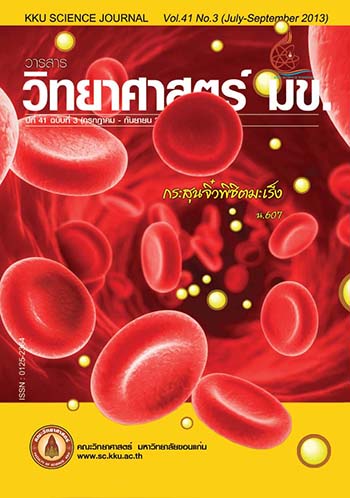The Difference of Bullet Marks at Metal Sheets of .38 Special Revolver (LRN) and 9 mm. Luger Automatic (LRN)
Main Article Content
Abstract
This research aims to study the difference of bullet marks on the car metal sheets , caused by the collision of lead ammunition (Lead-Round Nose : LRN), shooting from .38 Special revolver and 9 mm Luger automatic pistol at the different distances and angles. This research will be benefit in the process of forensic identification caused from shooting vehicles crime scene. In this experiment, the metal sheets used from Toyota taxi car, size at 30 x 30 x 0.1 cm. The guns used in this research was a .38 Special revolver Smith & Wesson Model 15 - 4 with Winchester .38 Special Lead-Round Nose (LRN), and a Browning Hi-Power 9mm Semi Automatic pistol with Royal Ammunition Industrial 9 mm luger Lead-Round Nose (LRN). The shooting assessment was tested at 3 different distances, and with 4 shooting angles. The images of bullet marks on the metal sheets were recorded by digital camera. The width, length and depth of bullet marks were measured by the Digital vernier caliper and the obtained data were statistically analyzed. Land and Groove of the bullet which appeared on the metal sheets were investigated using Stereo Microscope. The results revealed that the sizes of bullet marks on the metal sheets caused by. 38 Special revolver ammunition are larger than the bullet marks from 9 mm Luger automatic ammunition. However, the distance of shooting has no effect to the size of bullet marks (at the significant level of .05). In the case of 30 degree shooting angle, the land and groove of bullet marks were detected on the metal sheets. This could be used for calculation in number of land and groove present on the barrel of the shot gun.
Article Details

This work is licensed under a Creative Commons Attribution-NonCommercial-NoDerivatives 4.0 International License.


